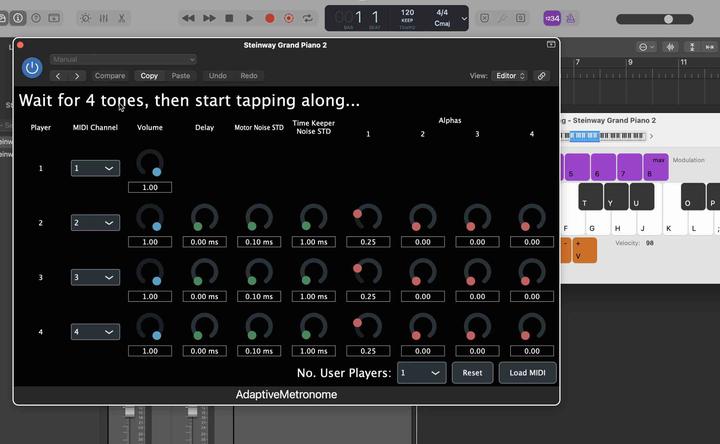Plug-in for Simulating Harmonious Music Synchronization

We are delighted to announce a groundbreaking development in the project. We have successfully created a remarkable plug-in designed to simulate the harmonious synchronization of musicians within a violin quartet, opening up new possibilities for testing and experimentation in group music performance. Central to the plug-in’s functionality is the understanding of musical cohesion, reflected in the control parameters that empower users to tailor their experiences.
This innovative plug-in can be used on DAW software (like Logic Pro, Reaper, Garageband) to produce a musical piece. The plug-in supports various configurations of the quartet’s composition, accommodating both virtual and human players, enabling research studies in ensemble synchronization. Human players can produce musical notes either tapping a single key, pressing the notes corresponding to the score on the keyboard, or using a midi instrument. Virtual musicians perform their notes using a linear phase correction model, i.e. they maintain a harmonious collective by synchronising to the user and to each other. The plugin records note times for each of the four musitians composing the simulated music ensemble.
This is the first step to revolutionize music rehearsal as it allows musicians to practice in a group, even when alone. This advancement has the potential to transform the way musicians approach their rehearsals and refine their skills. By simulating a realistic ensemble experience, the plug-in offers a unique opportunity for musicians to improve their synchronization, timing, and overall performance quality.
information about the plugin can be foud in the demo page.
The plugin can be downloaded here.